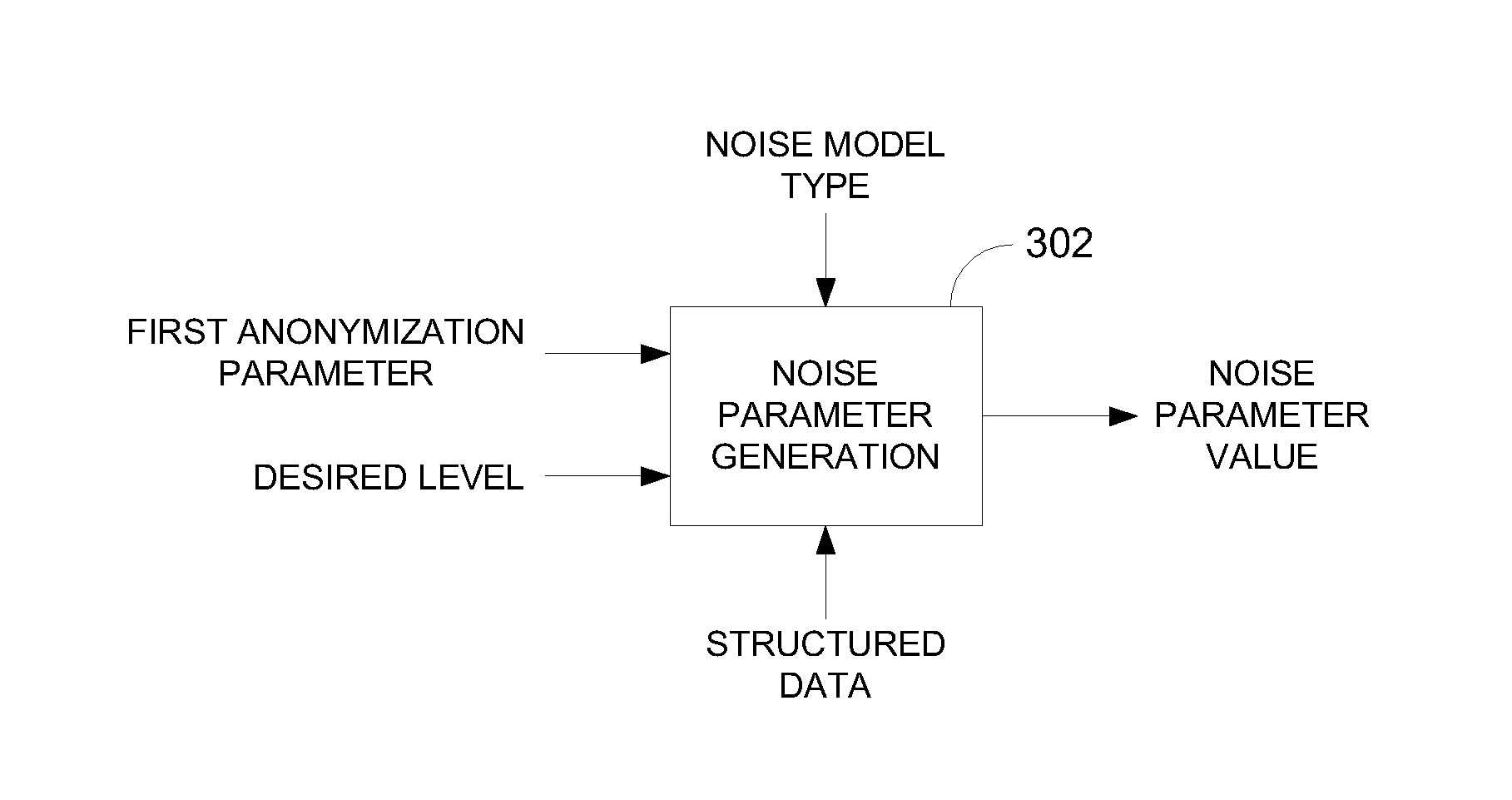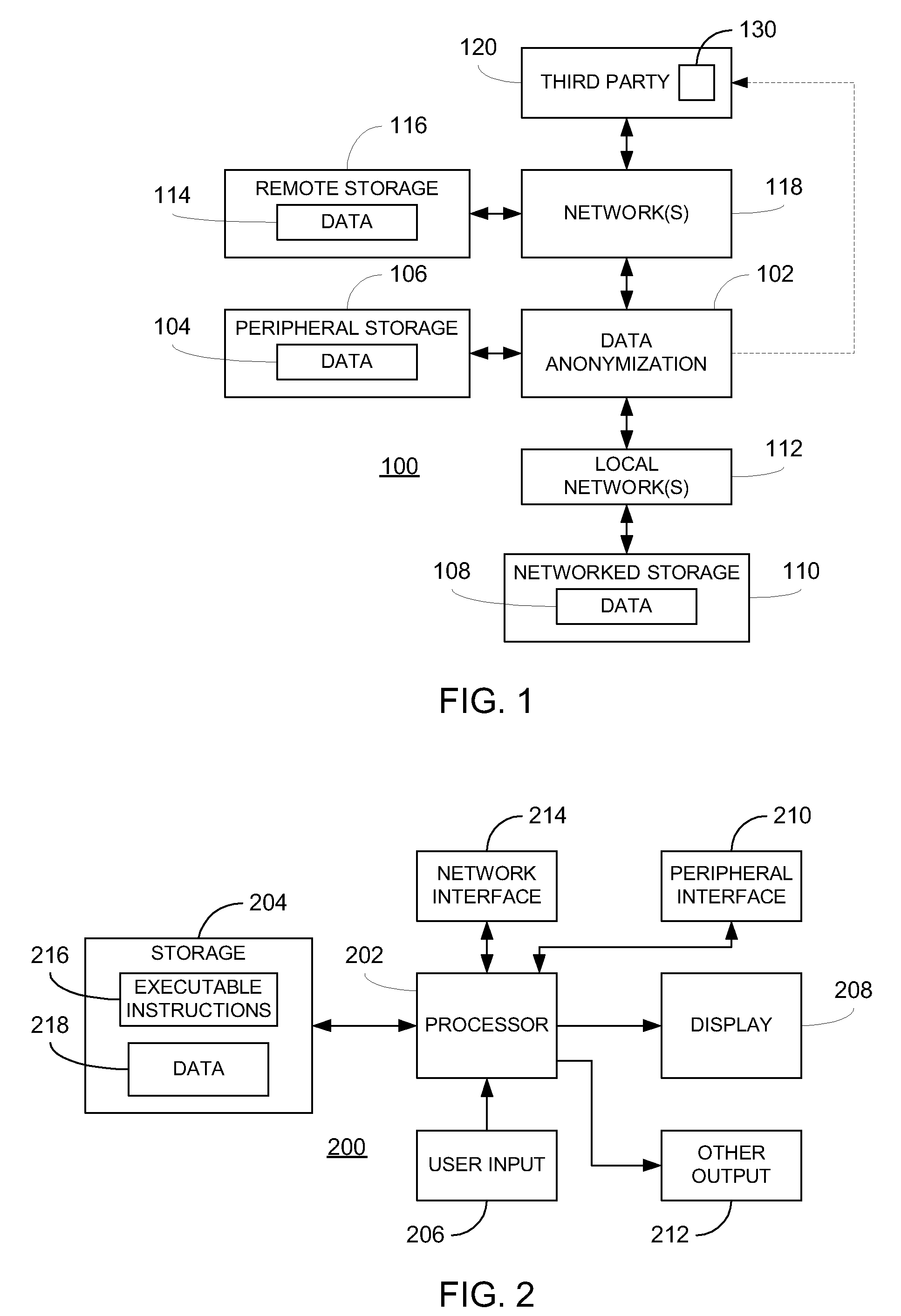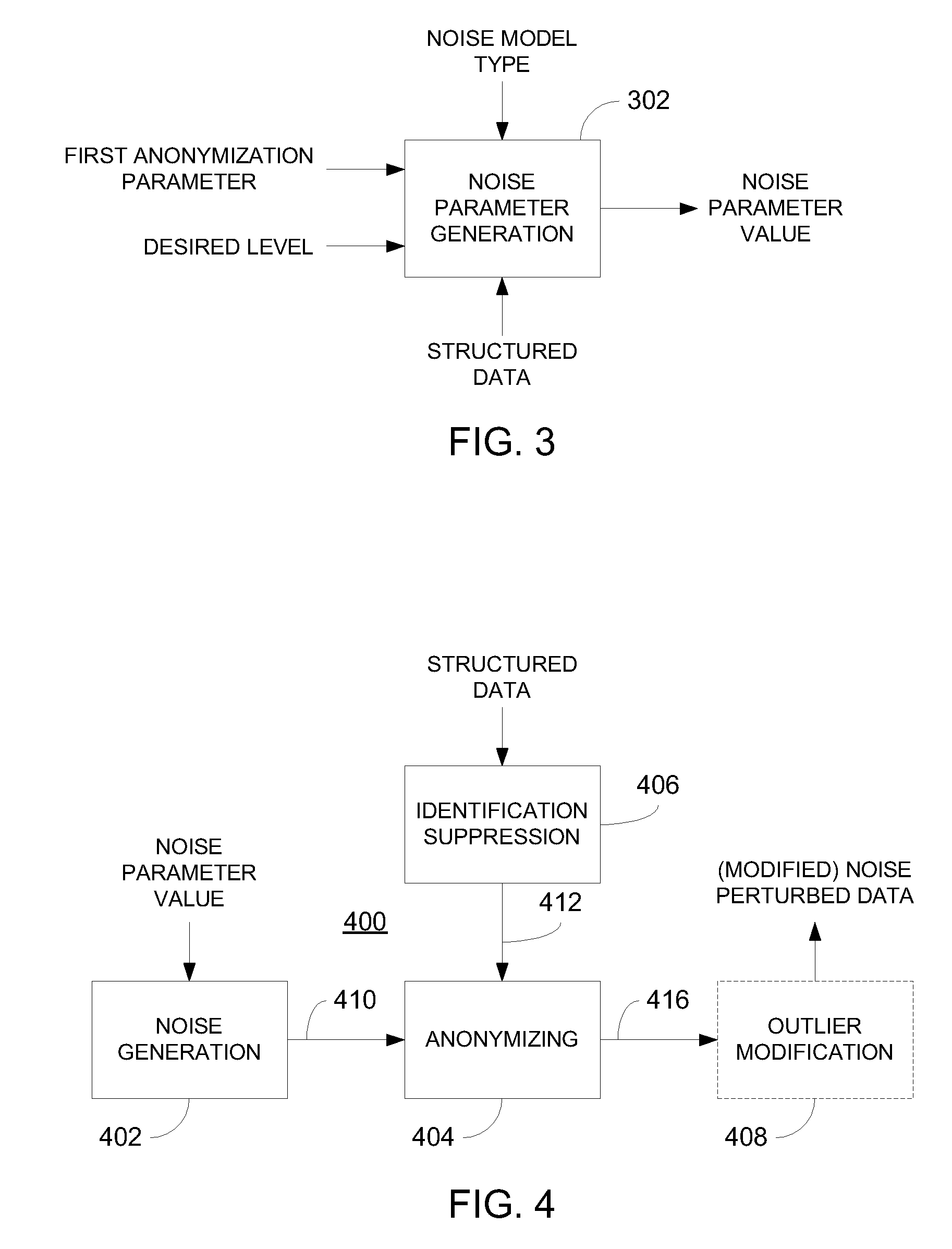Data anonymization based on guessing anonymity
a data anonymization and anonymization technology, applied in the field of data anonymization, can solve the problems of reducing to difficult combinatorial optimization problems, preventing useful applications, and reducing the difficulty of adversaries relating any given record to a specific individual, so as to maximize the guessing anonymity of data, reduce the distortion, and maximize the guessing anonymity
- Summary
- Abstract
- Description
- Claims
- Application Information
AI Technical Summary
Benefits of technology
Problems solved by technology
Method used
Image
Examples
Embodiment Construction
[0017]Referring now to FIG. 1 a system 100 is illustrated comprising a data anonymization device 102 in communication with a third party 120 via one or more intervening networks 118. As described in greater detail below, the data anonymization device 102 may comprise a desktop or laptop computer, a server computer or similar devices as known in the art. Similarly, the third party 120 may likewise comprise processing devices located at a place of business, research organization or other institution interested in receiving anonymized structured data. Although a single third party 120 is shown for ease of illustration, it is understood that multiple such third parties may exist in any implementation. The network(s) 106 may comprise a public network (e.g., the Internet, World Wide Web, etc.) or private network (e.g., local area network (LAN), etc.) or combinations thereof (e.g., a virtual private network, LAN connected to the Internet, etc.). Furthermore, the network 106 need not be a w...
PUM
 Login to View More
Login to View More Abstract
Description
Claims
Application Information
 Login to View More
Login to View More - R&D
- Intellectual Property
- Life Sciences
- Materials
- Tech Scout
- Unparalleled Data Quality
- Higher Quality Content
- 60% Fewer Hallucinations
Browse by: Latest US Patents, China's latest patents, Technical Efficacy Thesaurus, Application Domain, Technology Topic, Popular Technical Reports.
© 2025 PatSnap. All rights reserved.Legal|Privacy policy|Modern Slavery Act Transparency Statement|Sitemap|About US| Contact US: help@patsnap.com



